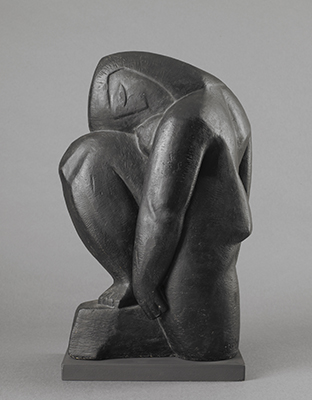M. Shkandrij in his ‘Avant-Garde Art in Ukraine’ published in Boston in 2019, wrote that Alexander Archipenko “called for a renewal of “ancient polychromy which is far richer than the contemporary non-colored sculpture… The charm of his works, wrote Apollinaire, comes from an effortless sense of inward order (Apollinaire 1969; quoted in Karshan 1969, 12). It is a sense that comes from an awareness of ancient art: Egyptian, Assyrian, Greek, Scythian, Byzantine, and Greek.
In his student days, the artist had taken part in archaeological expeditions, and some critics maintain that early works such as his Woman and Suzanna (1909– 10) recall the simple but powerful expressiveness of ancient stone idols that can be found in the steppe (Olenska-Petryshyn 1997, 490). The profound influence of these statues has been indicated by the artist himself, who recalled how as a small child he played on one of them, climbing over it.
However, during dark evenings, he avoided passing it, because it struck terror into him. This same statue now stands in front of the National Art Museum in Kyiv. His interest in ancient art was probably linked to his fascination with cosmic dynamism, the sense of unity between the highest and lowest forms, between solar systems and the cells of organisms. Art for him reflected the forces of the universe, and he felt that the best art crystallized intuitively sensed forms. Apollinaire was convinced that this aspect of his work reflected the presence of ancient belief-systems (see Karshan 1969, 12–14).

More on Alexander Archipenko >
The “Royal Scythia, Greeece, Kyiv Rus” has images of multiple Scythian art objects discovered in Ukraine.